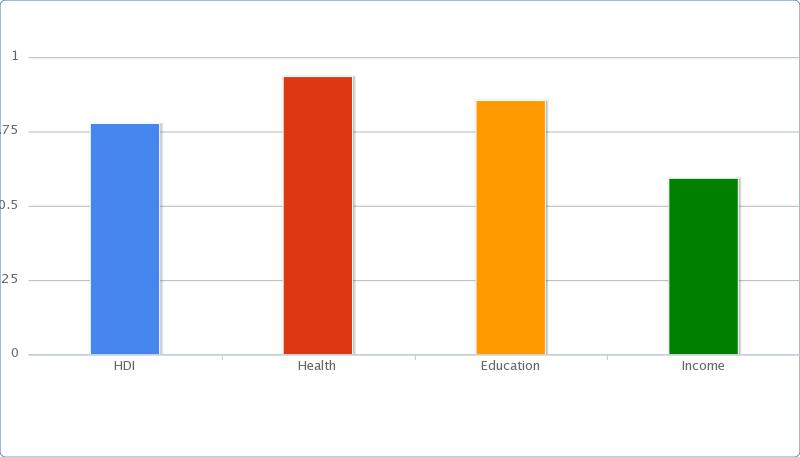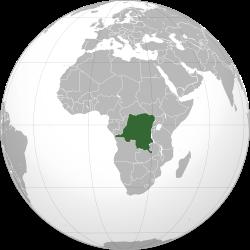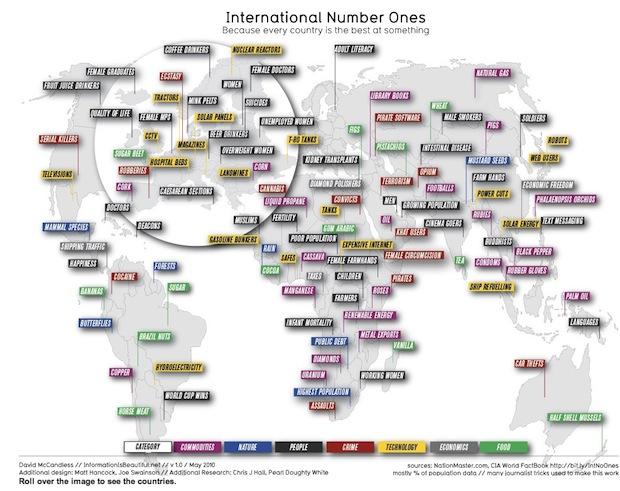This is just a quick post on the spread of Ebola… Can’t really not do something on this when you teach health and development…..
The spread of Ebola
As of 7th November 2014 there have been 13268 confirmed cases of Ebola and almost 5000 deaths from Ebola, spread across Sierra Leone, Guinea, and Liberia, with 1/2 people contracting the dieseas dying from it. This web site outlines the current cases and deaths from Ebola in West Africa and beyond…..
http://www.cdc.gov/vhf/ebola/outbreaks/2014-west-africa/index.html
Projections
A report from September (Estimating the Future Number of Cases in the Ebola Epidemic—Liberia and Sierra Leone, 2014–2015) estimated that wthout additional interventions or changes in community behavior, by January 20, 2015, there will be a total of approximately 550,000 Ebola cases in Liberia and Sierra Leone or 1.4 million if corrections for underreporting are made. The report also noted that halting the epidemic requires that approximately 70% of Ebola cases need to be cared for either in Ebola Treatment Units or in a community setting in which there is a reduced risk of disease transmission and safe burials are provided.
What are the symptoms of Ebola?
In a nutshell, victims bleed to death.
AKA Ebola hemorrhagic fever, symptoms typically start between two days and three weeks after contracting the virus as a fever, sore throat, muscle pain, and headaches. Then, vomiting, diarrhea and rash usually follow, along with decreased function of the liver and kidneys. At this time some people begin to bleed both internally and externally.The disease has a high risk of death, killing on average 50 percent of those who contract it, often due to low blood pressure from fluid loss, and typically six to sixteen days after symptoms appear.
Ebola lives on in the deceased for at least three days…..and this is when Ebola is at its most contagious. All it takes is one tiny speck of any of the various body fluids associated with death to enter your body, and you’re infected.
Why is Ebola spreading so rapidly?
Here I focus on Sierra-Leone
(1) The first case….
The first confirmed Ebola case was in Sierra Leone was in May (2014), when a woman was admitted to a government hospital in Sierra Leone. The authorities traced her back to a well known healer in the region, who many people visited both from SL and from accross the border in Guinea, where Ebola had already been confirmed. This healer (for obvious reasons) contracted Ebola herself, and died, and this was seen as a seminal event in Ebola’s spread, with 365 deaths being traced back to her well-attended funeral.
The virus, being highly contageous, spread rapdily after that, with doctors and nurses being common casualties, dampening the ability of the country to delay the further spread of the disease.
(source – http://www.who.int/csr/disease/ebola/ebola-6-months/sierra-leone/en/)
(2) Traditional burial practices in West Africa?
One THEORY of the spread of Ebola is that traditional burial practices, which involve morners touching the deceased, lead to the rapid spread of the disease.
However, the main evidence from this comes from Anthropoligsts who have observed death ceremonies in Uganda, which is firmly in East Africa (see this article) http://www.thedailybeast.com/articles/2014/08/13/kissing-the-corpses-in-ebola-country.html
As one anthropologist describes a UGANDAN burial ceremony…..
In the Ugandan ceremonies the sister of the deceased’s father is responsible for bathing, cleaning, and dressing the body in a “favourite outfit.” This task is “too emotionally painful” for the immediate family. In the event that no aunt exists, a female elder in the community takes this role on. The next step, the mourning, is where the real ceremony takes place. “Funerals are major cultural events that can last for days, depending on the status of the deceased person.” As the women “wail” and the men “dance,” the community takes time to “demonstrate care and respect for the dead.” When the ceremony is coming to a close, a common bowl is used for ritual hand-washing, and a final touch or kiss on the face of the corpse (which is known as a “a love touch”) is bestowed on the dead. When the ceremony has concluded, the body is buried on land that directly adjoins the deceased’s house because “the family wants the spirit to be happy and not feel forgotten. These burial rituals and funerals are a critical way for the community to safely transfer the deceased into the afterlife. Prohibiting families from performing such rites is not only viewed as an affront to the deceased, but as actually putting the family in danger. “In the event of an improper burial, the deceased person’s spirit (tibo) will cause harm and illness to the family,”
(3) Mistrust of health workers
Terry O-Sullivan, who spent three years volunteering in Sierra-Leone reports that….
“People have no idea how infectious diseases work. They see people go into the hospital sick and come out dead—or never come out at all,” he says. “They think if they can avoid the hospital they can survive.” This mistrust of the medical world seems to be validated when a family is prohibited from honouring the dead, participating in the funeral, or even seeing the body.”
This is backed up by a report from the BBC World Service (28/10/14) focussing on the ‘dead body management team’ in Sierra Leonne’s capital Freetown – The report described how, with Ebola still on the increase, although the message about the risks associated with the disease is getting through, there is enoromous resistance in rural or semi-rural villages when the disposal team arrives to remove a dead body for cremation. The reason for the resistance is that it is traditional for relatives to bury the body, typically with a lot of physical contact being involved.
The report followed the disposal team into one village, where a 65 year old woman had recently died. Their job was to get the morners ‘on side’, disinfect literally everything in the hut containing the body, bag the body up (in 2 body bags) and remove it, spraying everything on root. In the process the team is thoroughly suited, with gloves taped on. Apparently the most dangerous part of the process is the removal of the suit afterwards, the staff have to be sprayed with chlorine as every layer of protective clothing is removed.
(4) The literacy rate in SL is only around 35%, which hampers the ability of authorities to explain how Ebola is spread and how to prevent its spread, athough I imagine this isn’t so important given the widespread prevalance of the radio as a means of communication in SL.
(5) Lack of money and medical resources in SL. In the article above O’Sullivan appears to be suggesting that it would be necessary to have health workers in every village to win the trust of villagers and supervise funerals so that they can be conducted safely, without risk of spreading the disease. Until that happens, he seems to think it’s unlikely that its spread will be stopped.
Putting Ebola in perspective….
Looking at current figures, there are 14 things which kill more people per year than Ebola (including road traffic accidents) – Using WHO data from 2011 To illustrate…..
| Deaths | % | ||
| 1. | Malaria | 13,262 | 17.77 |
| 2. | Influenza & Pneumonia | 10,761 | 14.42 |
| 3. | Diarrhoeal diseases | 8,673 | 11.62 |
| 4. | Tuberculosis | 7,143 | 9.57 |
| 5. | Low Birth Weight | 3,654 | 4.90 |
| 6. | HIV/AIDS | 2,775 | 3.72 |
| 7. | Birth Trauma | 2,748 | 3.68 |
| 8. | Maternal Conditions | 2,191 | 2.94 |
| 9. | Stroke | 2,143 | 2.87 |
| 10. | Measles | 2,047 | 2.74 |
| 11. | Coronary Heart Disease | 1,788 | 2.40 |
| 12. | Meningitis | 1,712 | 2.29 |
| 13. | Road Traffic Accidents | 1,311 | 1.76 |
| 14. | Malnutrition | 1,176 | 1.58 |
15. Ebola (so far in 2014) 1130
NB I don’t want to underplay the threat of Ebola – I’m aware of the unfair comparison and the doubling every 20 days or so. If current projections come true and there are 500 000 or more confirmed cases in SL and the death rate is one in two, then Ebola will top the death league tables for 2015 by a long way. It is, however, important to note that in the table above these deaths are occurring every single year – so cumulatively deaths from preventable causes is a massive problem in SL even without Ebola.
If people really want to prevent West African children dying from preventable diseases then ending poverty in SL is the most important long term goal. Just turning up in chemical suits for a few months and then turning our backs isn’t going to help that much. It will, however make us feel a lot better about ourselves.
Ebola and the globalised culture of fear….
One interesting line of analysis about Ebola is the extent to which media attention reflects predominent narratives in the West….
Ebola sits well with parellel narratives in the ‘globalised culture of fear’ – Ebola’s basically another threat from abroad – just like the immigrants and terrorists – All of our problems come from outside, and the Ebola story reinforces this ignorance, especially when, in its original incarnation, it does actually come from the Heart of Darkness, which is pretty much the same as the all-the-same countries in West Africa.
Ebola also fits well with the Modernisation Theory narrative that ‘backward Africans’ cultural practices lead to them dying off… The predominant focus in the media seems to be on silly Africans with their backward burial rituals, all touching each other and monkeys and bats and given each other Ebola, rather than focussing on the lack of money and facilities which are essential to dampening the spread of the disease and preventing the other 14 preventable causes of death which currently kill more people every year than Ebola’s killed so far this year.
Of course what the media should be focussing on are the year on year causes of death in SL and other poor countries – and the day to day causes of health problems in general – poverty, lack of clean water and poor sanitation, and of course the good ole’ unfair trade rules which keep poor countries poor. This however is a lot more difficult for an ignorant and generally uncaring audience to understand.


















